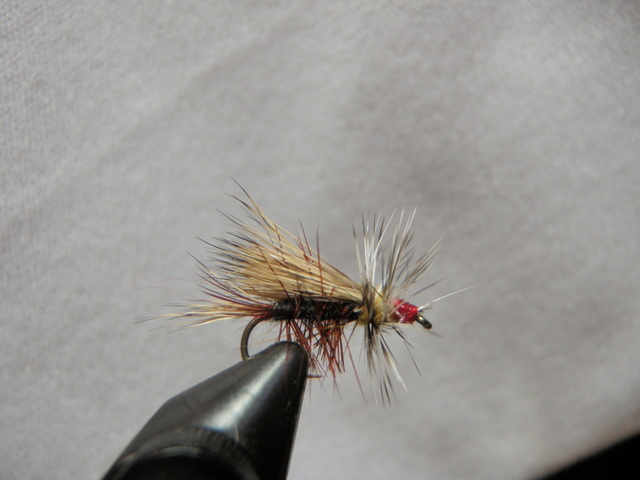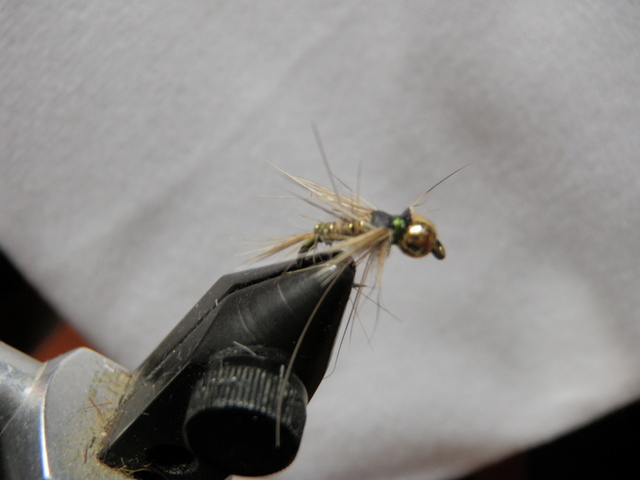November Fly Tying 11/27/2013 Photo Album
It’s 9:30AM on November 27 and I’m killing time waiting to depart for the airport and our long flight to Buenos Aires, Argentina. High temperatures in Buenos Aires are around 80 degrees and highs in Bariloche are upper 60’s and low 70’s. I can’t wait, even though highs in Denver for Thanksgiving are projected at 55 degrees. My bags are packed, my checklists are marked, and in an hour Jane and I will depart for the RTD terminal where we will board the Skyride shuttle that will transport us to DIA.
In preparation for the fishing in Argentina I purchased some flies and allocated some of my inventory to an Argentina fly box. In addition Taylor Edrington advised that I should be prepared with some large caddis as Patagonia has a heavy population of these insects. I have quite a few caddis that I tie for Colorado, but they are mainly size 16, so I sat down at my vice and produced some size 14 caddis. I made three with a medium olive body, three Adams gray, three black and three tan. I already possessed three yellow versions that I purchased. I tied these flies with a deer hair tail, brown hackle palmered over the body, a deer hair wing and a grizzly hackle in front of the wing. These flies should float well and present a very bushy image on the lakes and streams of Argentina.
Another phase of my preparation was to take an inventory of all my go to nymphs and attractors. I created a list with a count of the flies I had and then also noted how many I planned to tie this winter for the 2014 season. My top producer year in and year out has been Dave’s beadhead hares ear nymph and I like to enter each season with 100 of these in stock. My count revealed to me that I needed to tie 44 to rebuild my inventory to 100, so I’ve been busy working on this goal over the last two weeks. In addition I tied 15 for a fishing buddy and packaged them up and put them in the U.S. mail. I tied my beadhead hares ears in the same manner as I’ve used historically, however, I initiated the practice of applying head cement at three critical junctures in the process to improve durability. I noticed that my hares ears tend to unravel just in front of the tail and also just behind the bead, so I dab head cement on the thread wraps just in front of the tail before dubbing the abdomen. Once I’ve tied in the wing case I apply more head cement to the wraps in the thorax area before wrapping the dubbing. Finally I apply clear nail polish to the final wraps behind the bead. Hopefully all these improvements will enhance the durability of Dave’s hares ear nymph.


